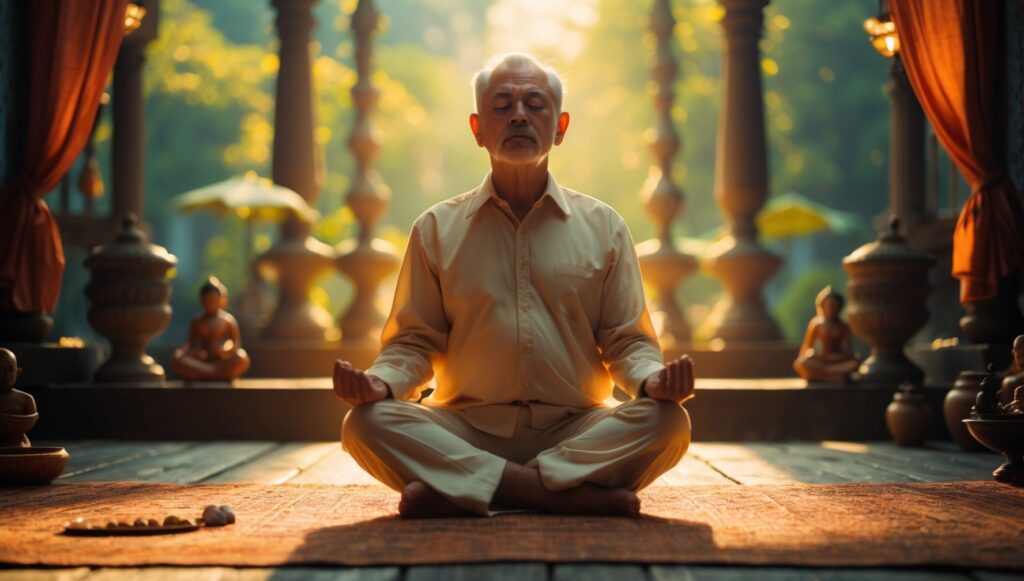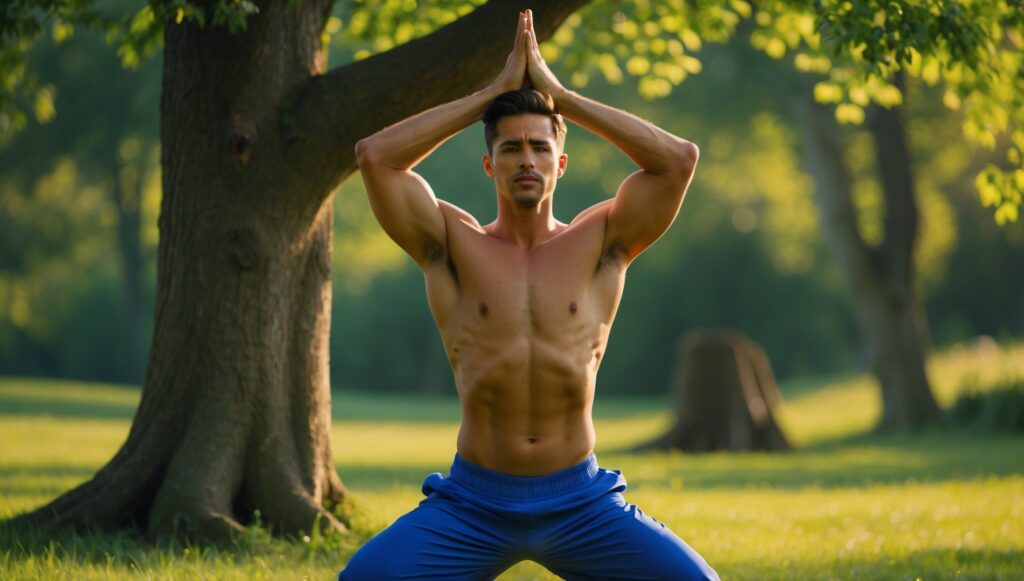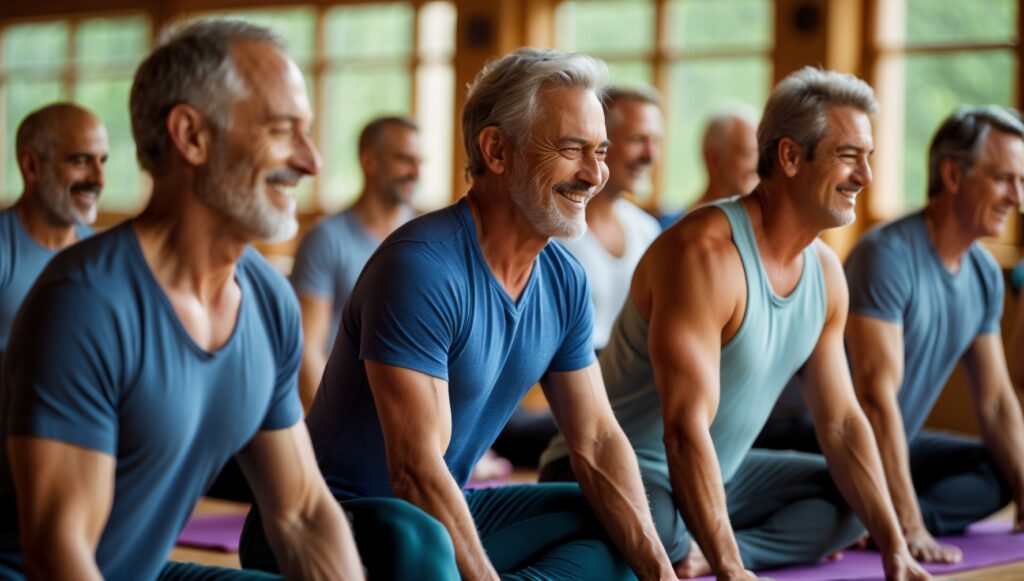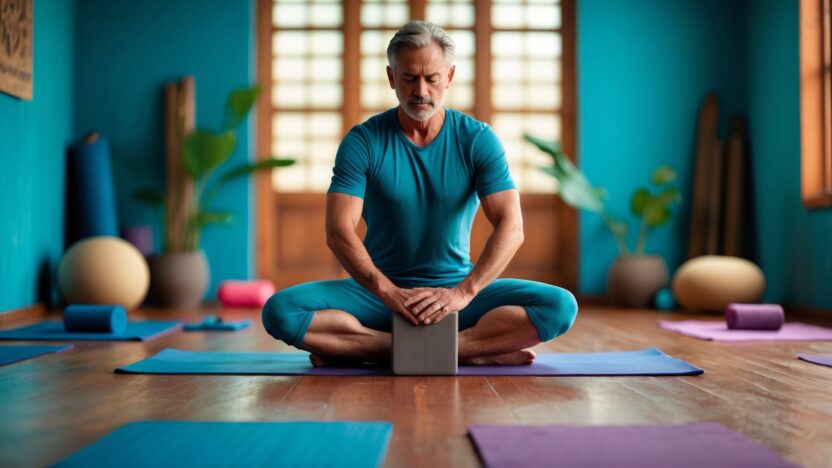Yoga is more than just a fitness trend—it’s a holistic practice that offers numerous physical, mental, and emotional benefits, especially for older men. as flexibility, strength, and balance naturally decline with age, yoga provides a gentle yet effective way to maintain vitality and improve overall well-being. in this guide, we’ll explore the many advantages of incorporating yoga into your routine after 50.
Why Is Yoga Ideal for Older Men?
Yoga is adaptable, low-impact, and accessible, making it perfect for men over 50 who want to stay active without straining their bodies. its focus on mindfulness and controlled movements promotes longevity and quality of life.
How Yoga Supports Aging Gracefully
- Improves Flexibility: Counteracts stiffness and enhances mobility.
- Builds Strength: Engages muscles without heavy lifting or strain.
- Enhances Balance: Reduces the risk of falls and injuries.
- Promotes Relaxation: Lowers stress levels and fosters mental clarity.
“yoga is not about being flexible—it’s about finding balance in mind, body, and spirit.”

Physical Benefits of Yoga for Older Men
Yoga offers numerous physical advantages that are particularly valuable as you age. here’s how it can transform your health.
1. Increased Flexibility and Mobility
As we age, joints can stiffen, and muscles may lose elasticity. yoga gently stretches the body, improving range of motion and reducing discomfort.
Poses to Try for Flexibility
- Cat-Cow Pose: Loosens the spine and relieves tension.
- Seated Forward Bend: Stretches the hamstrings and lower back.
- Child’s Pose: Relaxes the hips and thighs while calming the mind.
2. Improved Strength and Muscle Tone
Yoga uses bodyweight exercises to build lean muscle and improve endurance. even simple poses engage multiple muscle groups.
Poses to Build Strength
- Plank Pose: Strengthens the core, arms, and shoulders.
- Warrior II: Targets legs, glutes, and stabilizing muscles.
- Chair Pose: Builds strength in the thighs and lower body.
3. Enhanced Balance and Stability
Balance becomes increasingly important as you age to prevent falls and maintain independence. yoga improves proprioception (body awareness) and strengthens stabilizing muscles.
Poses for Better Balance
- Tree Pose: Challenges balance while strengthening the ankles.
- Eagle Pose: Improves coordination and joint stability.
- Standing Forward Fold: Encourages grounding and alignment.
4. Pain Relief and Injury Prevention
Yoga helps alleviate chronic pain by releasing tension, improving posture, and increasing blood flow to affected areas. it also reduces the risk of injury by promoting proper alignment.
Common Conditions Yoga Can Help With
- Arthritis: Gentle stretches reduce joint stiffness and inflammation.
- Back Pain: Core-strengthening poses support spinal health.
- Sciatica: Poses like pigeon pose relieve nerve compression.
Mental and Emotional Benefits of Yoga
Beyond physical health, yoga nurtures mental and emotional well-being, which is crucial for aging gracefully.
1. Stress Reduction
Yoga incorporates deep breathing and meditation, which activate the parasympathetic nervous system and reduce cortisol levels. this helps combat stress and anxiety.
Techniques to Reduce Stress
- Practice pranayama (breathing exercises) like alternate nostril breathing.
- End each session with savasana (corpse pose) for deep relaxation.
- Focus on mindful movement to stay present and calm.

2. Improved Mental Clarity and Focus
Yoga enhances cognitive function by increasing oxygen flow to the brain and encouraging mindfulness. this boosts memory, concentration, and problem-solving skills.
Poses for Mental Clarity
- Downward Dog: Increases blood flow to the brain.
- Bridge Pose: Stimulates the nervous system and calms the mind.
- Lotus Pose: Promotes focus during meditation.
3. Emotional Resilience and Mood Enhancement
The meditative aspects of yoga help regulate emotions and reduce symptoms of depression. practicing gratitude and self-awareness fosters a positive outlook on life.
Ways Yoga Boosts Mood
- Releases endorphins, the body’s natural mood enhancers.
- Encourages self-reflection and acceptance.
- Builds a sense of accomplishment and confidence.

Social and Spiritual Benefits of Yoga
Yoga also offers opportunities for connection and personal growth, enriching your life beyond the mat.
1. Building Community
Group yoga classes provide a chance to meet like-minded individuals and combat loneliness. sharing the experience creates bonds and mutual support.
Tips for Joining Classes
- Look for senior-friendly or beginner-level classes.
- Consider online classes if attending in person is challenging.
- Invite a friend or family member to join you for added motivation.
2. Deepening Mindfulness and Spirituality
Yoga encourages introspection and a deeper connection to yourself and the world around you. this spiritual aspect can bring purpose and fulfillment.
Practices to Enhance Mindfulness
- Set an intention before each session to focus your energy.
- Practice gratitude by reflecting on positive aspects of your day.
- Use affirmations to reinforce self-love and resilience.
Tips for Getting Started with Yoga After 50
If you’re new to yoga, don’t worry—it’s never too late to start! here are some practical tips to ease into the practice.
1. Start Slow and Listen to Your Body
Begin with beginner-friendly poses and avoid pushing yourself too hard. yoga is about progress, not perfection.
2. Choose the Right Style
There are many types of yoga to suit different needs and preferences. some popular styles for seniors include:
- Hatha Yoga: Gentle and slow-paced, focusing on basic poses.
- Restorative Yoga: Uses props to support relaxation and recovery.
- Yin Yoga: Targets deep connective tissues with long-held stretches.
3. Use Props for Support
Props like blocks, straps, and bolsters make poses more accessible and comfortable, especially for beginners.
4. Practice Regularly
Even 10-15 minutes a day can make a difference. consistency is key to experiencing the full benefits of yoga.
Frequently Asked Questions About Yoga for Older Men
Is Yoga Safe for Beginners?
Yes, yoga is safe and beneficial for most people when practiced correctly. consult a doctor if you have specific health concerns.
Do I Need to Be Flexible to Start Yoga?
No, flexibility improves with regular practice. yoga meets you where you are and helps you progress at your own pace.
Can Yoga Help with Chronic Pain?
Absolutely! yoga’s gentle stretches and strengthening exercises can alleviate pain caused by conditions like arthritis or back issues.
How Long Does It Take to See Results?
You may notice improvements in flexibility, strength, and mood within a few weeks of consistent practice.



